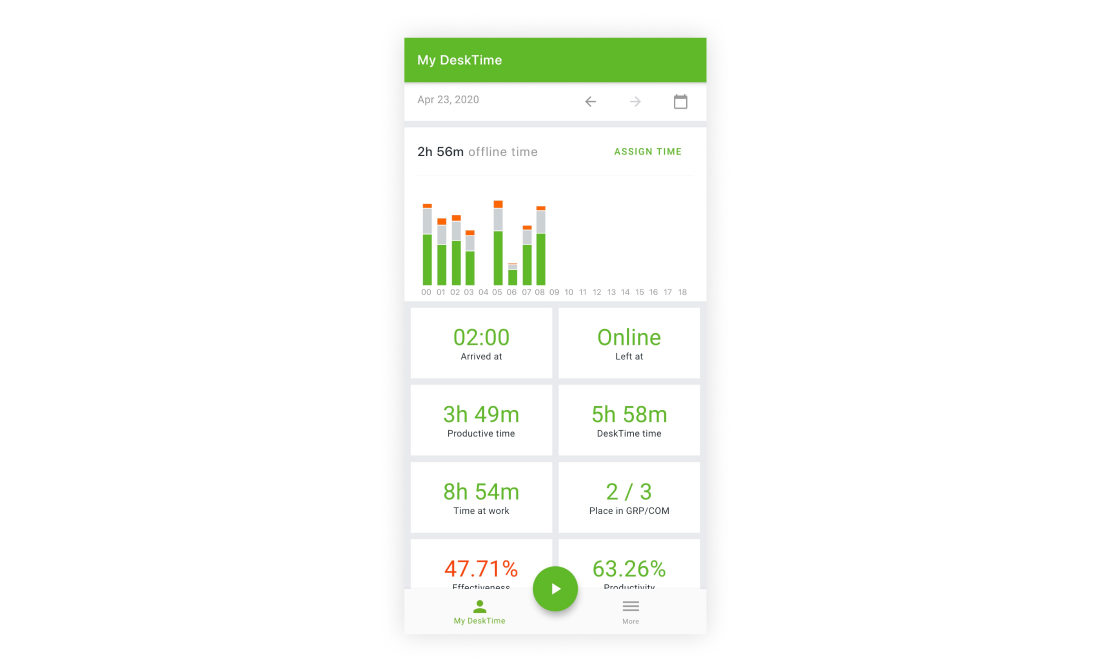

Traqq is a lightweight, yet powerful time tracking software that simplifies time tracking for you and your teams. Automated Screenshots and Video Recordings.The Best Employee Time Tracking App: Traqq Vs. We will also show you why Traqq is the best DeskTime alternative. Traqq is one of the few time trackers that can help boost your team’s productivity while promoting ethical employee monitoring.īelow, we take a closer look at their main differences and where each program excels. While DeskTime can help teams manage their productivity and performance, it's far from perfect. Today, we explore Traqq, one of the best DeskTime alternatives. When researching time tracking solutions, it's vital to check out the comparisons between different apps. A good time tracker should help you analyze productivity, understand daily habits, and detect unproductive workflow patterns. Seeking to manage and control how employees spend time at the workplace? You need an excellent time tracking tool to make the process smoother, faster and effective. Hopefully, the experience of the pandemic will have highlighted the need for changing how offices and management perceive productivity in favor of systems that leave more room for mutual trust and respect.įorbes Business Council is the foremost growth and networking organization for business owners and leaders.Free DeskTime Alternative for Employee Monitoring: Traqq Vs. In the end, as times change, so must managers.

Even if you aren’t ready to let go of the old ways yet, you’ll at least be laying the foundation to appreciate the work done, which is already a huge step. That's something I've implemented in my company, and I can say from the experience that having these systems in place only stands to ease remote collaboration for increased bilateral trust.Īdditionally, managers can implement milestones or goals with team members, as well as set up a system for checking in or reporting on that progress. Rather, managers need to find other systems to support their employees' success and keep tabs on their accomplishments.Īttendance-based systems could be replaced with evaluating task-based accomplishments and output, rather than time at the computer. One does not, and has never, equated the other. There's no clear-cut universal approach, but one obvious element is that managers have to separate the notion of attendance from productivity. The question, however, is: What can managers do to cope with the partial lack of attendance? In fact, a survey we conducted at the beginning of the pandemic found that 37% of respondents, and the largest represented group, preferred hybrid working. We've adopted the hybrid model at my company, too, and I see it as the default workplace setting of the future. Now that we're out of the pandemic phase, many companies are turning to a hybrid model to meet the latest demands in safety, health and lifestyle. Their previous methods were no longer viable, and team leads were left in a vacuum that sowed doubt and, in many cases, led to overcompensation. With the abrupt switch to remote work, managers and employees alike didn't have the time to undergo training or develop processes to support effective and productive work from home. Meanwhile, many employees reported that managers kept a very close eye on them and felt the need to be constantly available, with these demands interfering with their home and family life. This coincided with the number of managers (38%) who believe remote workers "perform worse" than those in the office. I believe failing to adapt to non-attendance-based approaches can lead to the reduced well-being of everyone-managers and employees alike.įor example, a Harvard Business Review study found that 40% of supervisors and managers had low confidence in their ability to manage remote teams. This tells me there is a clash in perceived realities and an overreliance on attendance as an indicator of performance. But research has found that remote work, when done well, can help support employee well-being and productivity. A study by the Society for Human Resource Management found that 72% of managers preferred to have employees working in person. The internet was filled with stories of managers requiring always-on webcams to maintain that visual cue. From my perspective, this showed that some managers struggled to evaluate employee performance separately from attendance. When the pandemic hit and knowledge employees shifted to remote work, managers no longer had that visual satisfaction of seeing employees in their seats. The pandemic presented challenges for many managers.


 0 kommentar(er)
0 kommentar(er)
